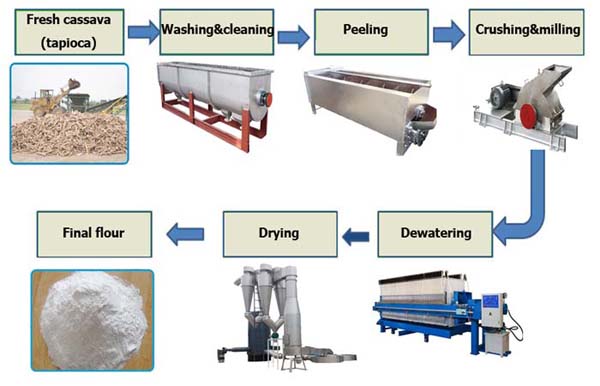Cassava flour processing plant business plan
Release Time:2020-10-11 14:24Author:sd888Source:未知
Any questions about the product can be communicated with us at any time!
Cassava flour processing plant business plan-cassava pressing method in brazil-cassava processing mechine-machine for cassava processing equipment in china
The whole process of cassava flour production includes the following steps:
Cassava is selected for washing, washing, peeling, grinding, dehydrating, drying, sieving and packaging
Step 1: Choose cassava
As the basis of cassava flour production, the quality of cassava raw materials is directly related to the quality of cassava flour. Therefore, it is important to choose healthy, mature, firm, and high-quality cassava roots from freshly picked cassava roots in cassava flour processing plants. In addition, the rotten meat should have no bruises, should be white, no cracks, and no fibrous roots.
Step 2: Clean the cassava
After harvesting fresh cassava, the soil, stones, leaves and other debris mixed with cassava should be removed in time. It is best to harvest cassava first, then enter the cassava flour processing plant, and process it on the same day to ensure the freshness of the raw materials, thereby improving the quality of cassava flour.
Step 3: Wash the cassava
The cleaned cassava is then transported to a paddle washing machine to remove dirt, sand, rind and other impurities in the cassava flour processing plant. This machine adopts counter-current mode, and the flow direction of water is opposite to that of the material to be washed. The raw material floats on the water and moves along the inner groove with the rolling blade, and rotates in the water to rub against each other to remove external soil and impurities, and the heavier sand and other heavy impurities sink to the bottom. tank.
Step 4: Peel the cassava
Then the washed cassava is sent to a cassava peeling machine for peeling, and the outer skin and subcutaneous cuticle of the cassava root are removed. Incorrect peeling of the cassava flour processing plant will cause the product powder to change color. The peeling machine designed by sda can achieve a peeling rate of over 95% to ensure the high quality of the final product.
Step 5: Tapioca grating
The role of grating is to destroy the structure of cassava, so that tiny particles can be broken down and released from the roots. This is the most important, because it determines the output of cassava flour. In cassava flour processing plants, the whetstone is a widely used whetstone. sda rasper has absorbed international advanced technology and can achieve a fracture rate of over 94%.
Step 6: Dehydrate the cassava flour
The chopped cassava is then transported to a plate and frame filter press for dehydration in a cassava flour mill. The dehydration process is mainly used to squeeze excess water to achieve drying standards.
Step 7: Tapioca flour is dried
Then, the dehydrated starch is further dried to the moisture content required by commercial starch in the cassava flour processing plant through a rapid dryer. The heat source of the air dryer is a steam heat exchanger. The wet tapioca is heated by hot air and the water evaporates. After drying, the cassava flour is separated from the air in a set of cyclones.
Step 8: sieving and packaging the cassava flour
Sieving is an important step to obtain high-quality cassava flour, which does not contain fibers with good particle size. In the cassava flour processing plant, a vibrating screen is used to screen the cassava flour to improve the fineness of the final product. Then pack the sifted tapioca powder into 25Kg or 50Kg as needed.


